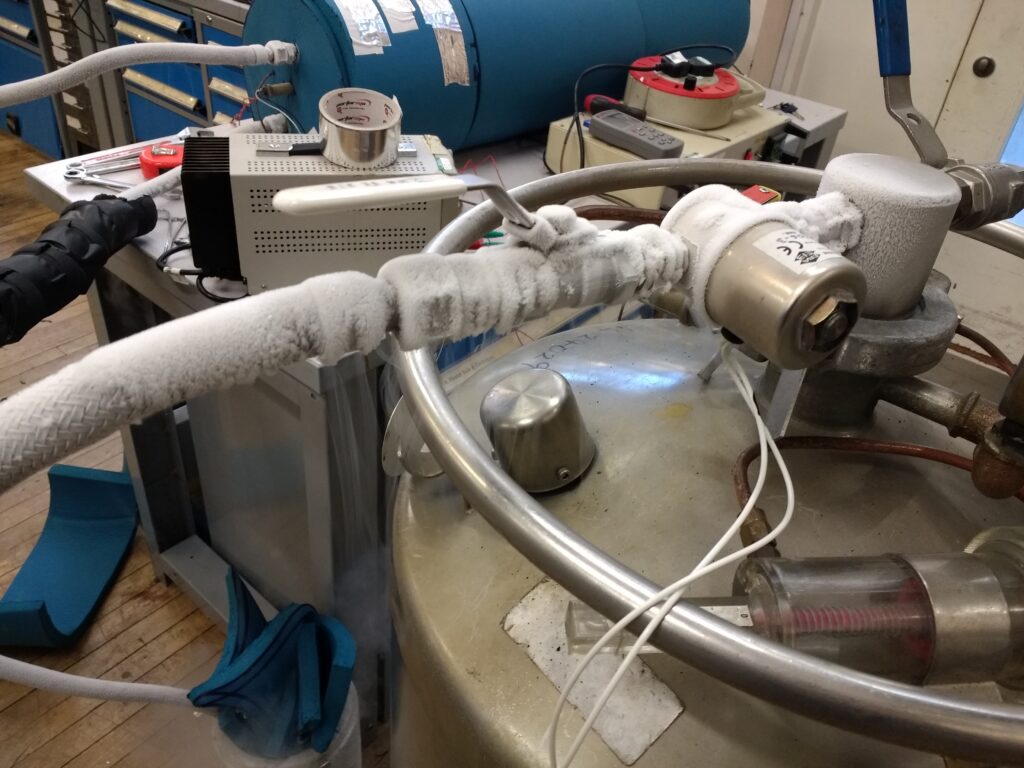Fluenta’s FlarePhase Cryo technology is specifically designed to operate in extreme low-temperature environments, ranging from -200°C to +250°C. This capability makes it suitable for a variety of industrial applications where processes either operate at cryogenic temperatures or experience significant temperature fluctuations. FlarePhase Cryo is an ideal solution for accurate flare gas measurement in industries such as LPG processing, liquefied natural gas (LNG) production, ethylene manufacturing, and other sectors that involve low-temperature or variable-temperature processes.

1. Liquefied Petroleum Gas (LPG) Processing
One of the primary applications of FlarePhase Cryo is in LPG processing. LPG, which primarily consists of propane and butane, is stored and transported in a liquefied form at low temperatures, usually around -42°C for propane. During various stages of LPG production and processing, flare gas measurement is critical for both safety and environmental compliance. FlarePhase Cryo provides precise gas measurement even in these cryogenic conditions, ensuring that emissions from flare stacks are accurately monitored. This level of accuracy is essential in controlling emissions and ensuring compliance with regulatory standards.
2. Liquefied Natural Gas (LNG) Production
LNG production is another industry that requires reliable flare gas measurement at very low temperatures. Natural gas is cooled to approximately -162°C to be transformed into a liquid, making it easier to store and transport. During the liquefaction process, flare gas can be produced, and its proper measurement is essential for operational safety, environmental monitoring, and compliance with regulations. FlarePhase Cryo’s ability to function accurately in these cryogenic environments makes it a critical tool for LNG facilities, ensuring they maintain safe and efficient operations while adhering to emissions standards.
3. Ethylene Manufacturing
In the ethylene production process, particularly in steam cracking operations, gas flows at both high and low temperatures must be carefully monitored. Ethylene plants typically operate at extreme temperatures, with flare gas stacks exposed to both high-temperature conditions during cracking and low-temperature conditions during separation and distillation stages. The wide operating temperature range of the FlarePhase Cryo (-200°C to +250°C) allows it to handle the fluctuations in temperature, providing reliable and consistent flare gas measurement throughout the entire process. This helps operators optimize plant performance while keeping emissions within regulated limits.
4. Cryogenic Air Separation
Cryogenic air separation is used to produce gases such as oxygen, nitrogen, and argon by cooling air to extremely low temperatures (often below -180°C). The gases are separated from the liquefied air as they boil off at different temperatures. FlarePhase Cryo is an essential tool in these processes for monitoring and measuring flare gas emissions, as the technology can operate at temperatures near -200°C. Accurate monitoring is crucial in these applications to minimize gas wastage, control emissions, and comply with environmental regulations.
5. Natural Gas Processing
In natural gas processing plants, cryogenic processes are often used to separate natural gas liquids (NGLs) such as ethane, propane, and butane from methane. These processes involve extremely low temperatures, typically below -100°C. Flare gas monitoring is essential to ensure that gases are burned off safely and that emissions are minimized. FlarePhase Cryo is specifically designed to handle these low temperatures, providing precise measurements and helping plants maintain safety and regulatory compliance.
6. Pharmaceutical and Chemical Industries
In the pharmaceutical and chemical industries, certain processes require very low temperatures for production and storage, particularly in the synthesis of specialized chemicals and active ingredients. In such environments, temperature control is critical, and emissions from chemical reactions or storage systems need to be closely monitored. FlarePhase Cryo offers the capability to accurately measure gas emissions at cryogenic temperatures, ensuring that these processes remain within environmental guidelines and emissions limits.
7. Hydrogen Liquefaction
The liquefaction of hydrogen requires temperatures as low as -253°C. Although FlarePhase Cryo does not reach these extreme levels, it plays an important role in supporting gas measurement at temperatures up to -200°C, which can occur during various stages of hydrogen processing. In the hydrogen economy, accurate measurement of flare gas during production and liquefaction processes is becoming increasingly important as the use of hydrogen as a clean energy source grows.
Handling Wide Temperature Fluctuations
Many of the industries that benefit from FlarePhase Cryo’s capabilities experience wide temperature fluctuations. For example, in certain petrochemical processes, flare stacks may be exposed to both cryogenic conditions and elevated temperatures, depending on the stage of the process or the system’s thermal cycling. FlarePhase Cryo can seamlessly transition between these temperature extremes without losing accuracy, thanks to its real-time calibration and signal optimization features. This ability to handle both the cryogenic and higher-temperature ends of the spectrum makes FlarePhase Cryo a versatile tool in industries where temperature fluctuations are common.
Conclusion
Fluenta’s FlarePhase Cryo technology offers a robust solution for industries operating in cryogenic environments or those experiencing wide temperature fluctuations. Applications such as LPG and LNG processing, ethylene production, cryogenic air separation, and natural gas processing demand reliable gas measurement technology that can perform under extreme conditions. With its ability to function accurately from -200°C to +250°C, FlarePhase Cryo ensures that operators can maintain safety, optimize operations, and meet emissions regulations across a variety of critical industries.



